7 Common Mistakes of New Growers and How to Avoid Them

- 1. Having no idea what you're growing
- 2. Wrong germination methods
- 3. Using the wrong medium
- 4. Underestimating the importance of ph levels
- 5. Keeping a bad diet
- 6. Wrong harvesting time
- 7. Using incorrect pots
- 8. Misjudging the importance of humidity
- 9. Not providing sufficient, high-quality light
- 10. Making it too public
- 11. The bottom line
Growing your own cannabis seeds for the first time when you have no one to turn to for help can become a real pain. We've heard stories of people who even had to purchase new seeds a couple of times due to different circumstances that lead their plants not to survive.
No one wants to star this sad drama story. So if you're a new grower and you don't want to mess up the growing process of your new baby plants then you came to the right place: we're going to help you dodge some common mistakes.
The most usual mistakes new cannabis growers make include: being unaware of what they are growing; using all the wrong soil and nutrients; overwatering and overfeeding; not keeping track of pH levels; and the most fatal of them all, making it too public.
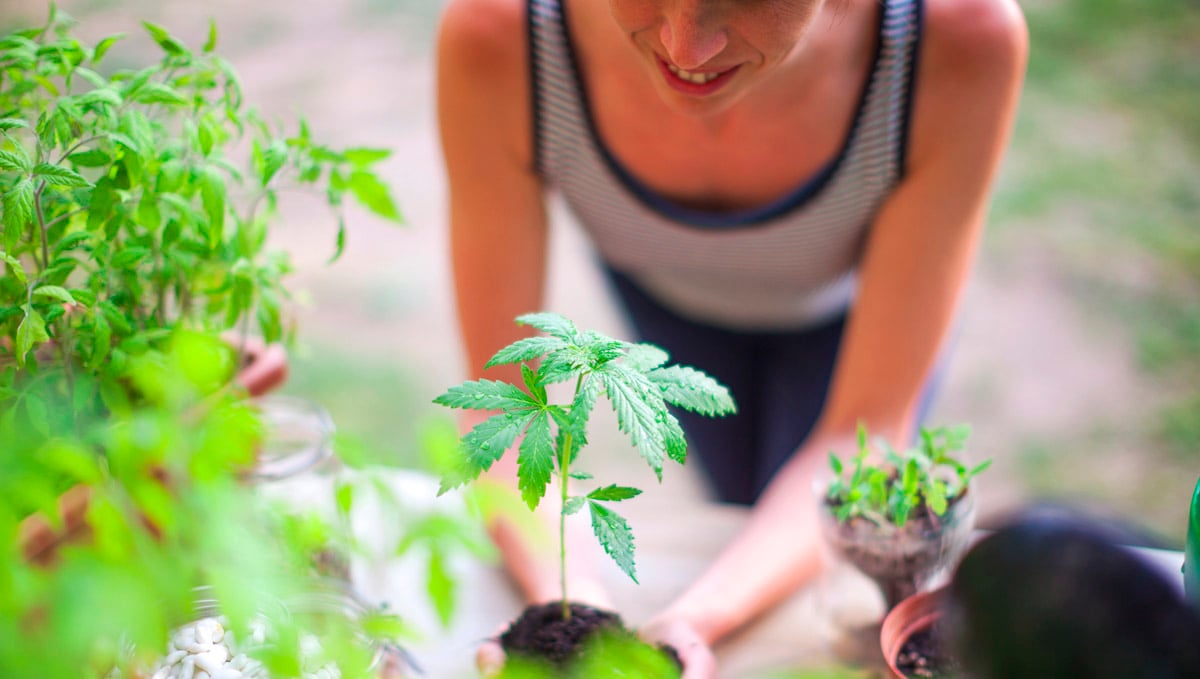
However, we're not just going to tell you that what you're doing is wrong but we'll actually help you overcome these small obstacles so that you can get the most out of your marijuana plants. The best way to go about avoiding making mistakes while growing weed is to learn all about them before you start growing. Instead of diving into the growing process with no idea what can go wrong, you can buffer against errors by knowing exactly what the common mistakes are. Knowledge is power, and knowing the potential pitfalls can help you sidestep them in the first place. Sure, making mistakes is a key way to learn. But knowing where things can go wrong won’t help you avoid every disaster, but it will help you deal with them better when they inevitably arise.
1. Having No Idea What You're Growing
One first extremely common mistake new growers make is not knowing a single detail about what type of seeds they are growing. We know it's quite normal to have friends give you some spare seeds which they claim to be 'the top of the line'. However, when you accept them it would be a good idea to ask a few questions, like if they are Indica, Sativa, autoflowers, regular, feminized, and so on.
Knowing the basic characterising of the cultivars you plan to grow will enable you to prepare your growing space and equipment accordingly. For example, if you have seeds for a giant sativa strain that can peak at a height of 300cm, you won’t want to plan a stealthy growing space in your bedroom closet. Likewise, there’s little point in preparing a large growing area outside if you only intend to grow one or two small and stealthy autoflowering specimens. You’ll also need a lot more water and nutrients to sustain a large plant, whereas small autos require far less. Knowing what you’re growing will help you prepare and prevent any unwanted surprises.
No, we're not overreacting. What you need to understand is that each different type of seeds will require different specificities for gaining its maximum potential while growing. It isn't as simple as throwing some seeds into the ground and magic happens. For example, if it turns out the seeds were males, after some months have gone by you'll realize all that dedication you were putting in was for a beautiful decorative plant since males don't grow buds.
On the other hand, some strains will adapt better to colder climates while others could need hotter, sunny weather. The same applies to nutrients, some plants will need more artificial nutrients than others who just need a few sporadic feedings.

It's important that you don't save a few euros difference when choosing your seeds too. Think of it from a long-term perspective: when you decide to start growing your own marijuana plants you're committing yourself to take care of them for more than a couple of months.
Therefore, wouldn't you like the final results to match all these efforts you're going to make with beautiful, high-quality buds? Buying cheap seeds is not how you'll get there. We recommend purchasing some of our best autoflowering feminized seeds, which will guarantee great flowers and an easy growth.
2. Wrong Germination Methods
It simply makes sense to say that failing to do the first step at anything right will likely result in an overall failed process. This is why you must inform yourself on what are the best way to germinate your seeds before you actually do it. Some common germination methods include:
- Germinating directly in the soil;
- The plates and paper towel method;
- Germinating in Rockwool;
- The glass of water method.
There are pros and cons to each of these methods. However, you can minimise any mistakes along the way by knowing what to avoid with each. Sowing directly into the soil is a great way to germinate. It helps the root system get established quickly and avoids any unnecessary transplant stress, which is partially helpful when growing autoflowering varieties that need as little disturbance as possible. However, you need to make sure you have a growing medium that drains well and has good aeration to avoid fungal diseases. The other methods are also effective but involve an element of transplant stress. Make sure you water them in well and throw in some mycorrhizal fungi for good measure to help your plants establish quickly and to defend them against soil pathogens. If you're looking for a complete guide on how to germinate your cannabis seeds, we recommend taking a look at the following germination guide article:
One final and hugely important warning is don't touch the seeds too much with your bare hands! We contain tons of essential oils and bacteria on our skin and by touching your seeds unnecessarily much you could be ruining their potential, and lets not even talk about causing it to fail at the germination process. So remember: not too much touching!
3. Using the Wrong Medium
Another aspect not to go cheap on is the growing medium. Think of it as the structure of a house, what would happen if you went cheap, trying to save up some money on materials? Chances are, after a couple of years after its construction, the house will start to show signs of detriment, with pipes problems, humidity, etc., etc. The same applies to weed plants.
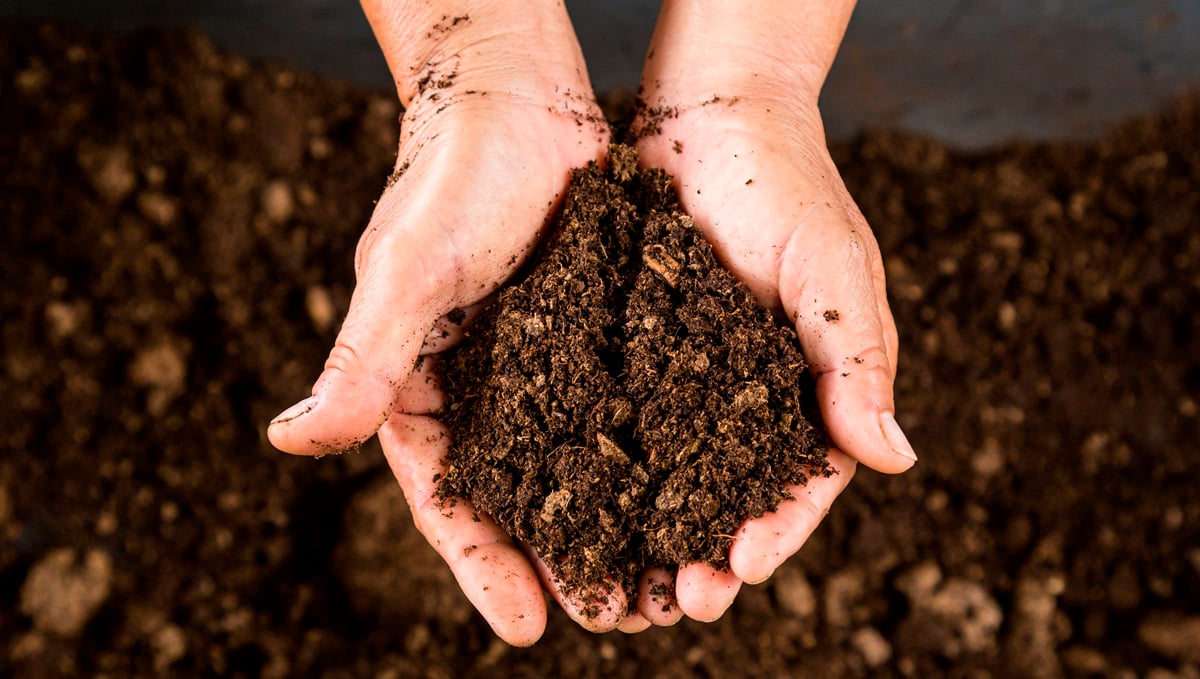
The soil you choose will make the structure of your house. So do you want your house to fall apart? Of course not. First of all, don't reuse potting soils. This also means you should definitely not use dirt from your yard, or any sources which quality is unknown. Reused soils come with the risk of pests and contaminants. A proper soil for your plants should be airy and light, ideally including some perlite mixed inside. This way the roots will be able to grow unhindered and it will guarantee proper draining.
Cannabis plants need specific nutrients to properly grow to match their highest potential, so feeding your plants with standard soil won't likely provide them with the optimum growing conditions. Although when growing outdoor plants, directly on your ground soil, your plants will count with a wide variety of natural nutrients, they will probably still need a little energy boost at some point in the growing process. To stay in tune with your plants' nutritional needs, you'll also need to keep track of the pH levels, which brings us to the next common mistake.
4. Underestimating the Importance of pH Levels
When you're a new grower it can get overwhelming when you realize that rather than just watering your plants you'll need to stand by some formulas and regiments in order to get good buds.

Perhaps you've already done some research and came across some famous formulas such as PPM, NPK, pH, 18/6, 24/0, Lucas Formula, etc., and you hoped you could unsee all of that information and turn back to simply watering. While some of these formulas are great, they could be more suitable for better-experienced growers. However, the one you should never undermind is the pH level.
Generally speaking, the pH will determine how much of certain nutrients your cannabis plants’ roots are capable of absorbing.
Therefore, purchase a pH tester so you can keep frequently checking the pH levels or your plants and avoid any catastrophes. When not attended, bad pH levels could even lead your plants to die.
When the pH is at the right level, then this means your plants should be able to suck up and retain any nutrients they might need at any time. Therefore, it is critical to test the pH level often.
| Growing medium | Healthy pH levels |
|---|---|
| In soil | Between 6.0 and 7.0 |
| Hydroponic systems, coco or other soilless methods | Between 5.5 and 6.5 |
This table should serve you as a guide to follow healthy pH levels for your plants.
5. Keeping A Bad Diet
Let's walk through another analogy. What would happen if a person only had junk food for the rest of his days? A.k.a., Super Size Me documentary film. Chances are that after a few months, this person will not be at his healthiest, and lets not even talk about blood test results.
Just like us humans need to include healthy fruits and veggies in our diets, so do cannabis plants. A healthy diet for marijuana plants should include balanced amounts of:
- Nitrogen;
- Potassium;
- Phosphorus;
- Magnesium;
- Calcium;
- And sulfur.
However, this doesn't mean you should go and drown your plants in these nutrients but more like make a scheduled feeding plan with precise amounts of each nutrient. When you overfeed a plant this could lead to a nutrient burn, where leaves will start turning brown, or a nutrient lockout.
Most nutrients come with a recommended feeding schedule on their packages, although they tend to be a little too high for our taste. Simply start trying out with lower doses to avoid overfeeding and slowly check the results for yourself. Some growers even avoid using synthetic inputs altogether and employ a completely natural and organic approach. This method centres around feeding the soil with organic matter, which helps beneficial microbes to increase in population. These little critters help to cycle nutrients from compost, worm castings, and mulch, and eventually make them available to plants. This approach creates great results, but it also takes some time to build soil health, so you might need to supplement your plants with liquid feeds during the first season.
6. Wrong Harvesting Time
A common mistake among new growers is missing the right harvesting time, whether it is by harvesting too early or too late. Perhaps you've managed to avoid each of the mistakes that we've listed above, which is great, don't misinterpret us. However, one big mistake you risk making when you're reaching the final line is missing the perfect harvest time.
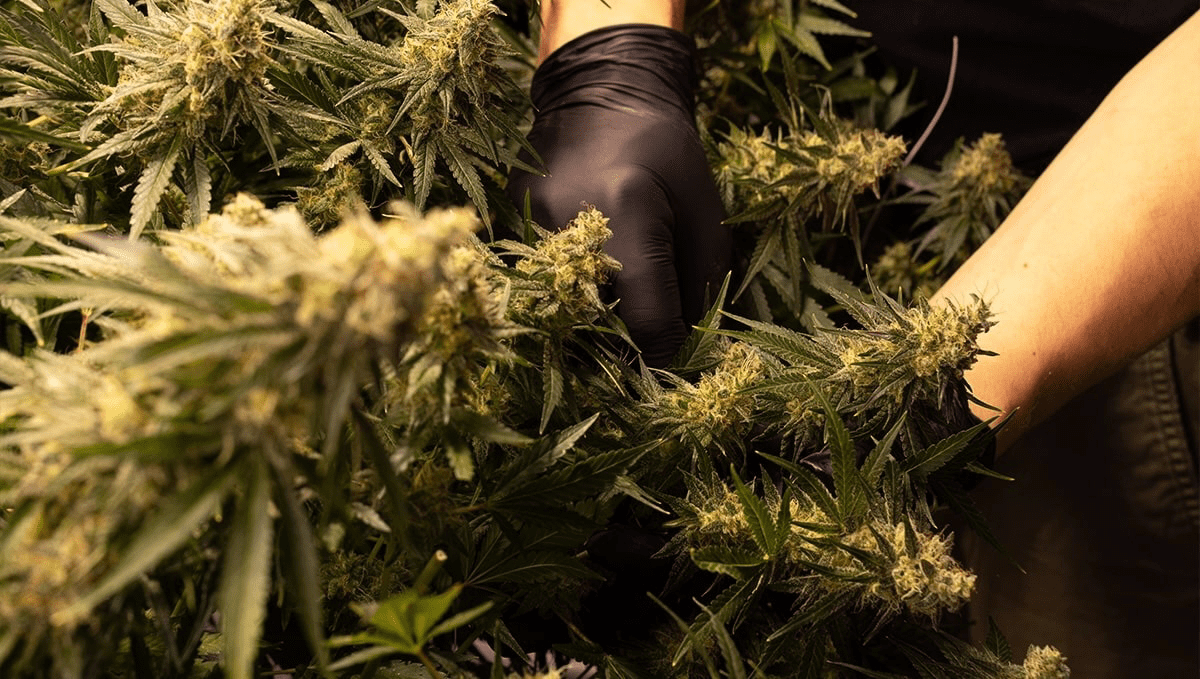
When you harvest your plants way too early you'll stop them midway to achieving their full potential. Contrarily, harvesting way-hey too late could result in your worst nightmare: rotten buds. So, how can you tell what's the perfect harvesting time? To your luck, it's quite simple.
- It's still too early if: all the trichomes have a clear color, or if they still have a whitish, clouded aspect.
- It's time to harvest when: most trichomes look cloudy white, with 10-20% of them turning into an amber hue.
- You missed the harvest train if: almost all trichomes have turned into a red/amber color and no white ones are left. Another sign its too late is your plant's leaves have turned yellowish or wilted.
We recommend getting a LED light magnifying glass to keep track of your trichomes and nail the harvest time.
7. Using Incorrect Pots
Many beginner growers overlooked just how crucial using the correct pot size is to the outcome of their harvest. And sure, while your plants will still grow and flower in almost any pot, the yield can be heavily affected if the grow containers are too small. The most important thing to get right is using a container that is big enough for the root ball to properly develop. Rootball sizing is in direct correlation to the size of the plant, and pot size is what dictates how big this rootball will eventually grow.
There are also some issues that can arise with using a pot that is too large, but they are much more manageable. These include the higher likelihood of fungal growth, overwatering, over-feeding, and root rot. But, in general, it is better to go a little bigger than smaller. For photoperiod plants, we recommend the following sizes:
- Germination to 10 days - Rockwool cube
- 11 days to 7 weeks - 14 L or 3.5 gallons
- 7 weeks (beginning of the flowering cycle) to the end of flowering - 20 L to 30 L (5 to 7 gallons)
This is only a very rough guide. You may find that you want even larger pots if you want humungous plants. There are also some differences between photoperiod and autoflower plants when it comes to choosing the right container. This is due to the fact that photoperiod plants can be forced to stay in the vegetative stage, whereas auto-flowering plants only have a set period for vegetative growth (usually 3 - 5 weeks, depending on the strain). Why does this matter? This means that you have to treat autos a little more carefully than photoperiod plants. Any type of stress can result in a reduced rate of growth for a few days, and that includes transplanting the plant from one pot to another. This is fine with photoperiod cannabis plants as you can just extend the veg stage until the signs of stress have dissipated, but you just simply can not do this with autos.
So, with autos, it is best to transplant no more than once - and never if at all possible. We find that the best results come from starting your autoflower seeds in a 12 to 20 liter (3 to 5 gallon) pot and letting them grow to their full size without ever transplanting. Just be sure to be as vigilant as possible, and make sure there are no signs of fungal growth or root rot beginning. Depending on your grow setup, this is not always possible. So, if you do need to house your babies in smaller pots, to begin with, make sure these pots are large enough for the rootball to have at least 20 days of development. Then, and only then, CAREFULLY transplant them to their final home for the rest of the grow. Drainage is also a factor to consider heavily. Again, this is an often-overlooked factor for beginner growers. Making sure your ladies have sufficient drainage is actually one of the most important things to consider when choosing your pots. Most store-bought pots will usually come with drainage holes pre-drilled, but in most cases, there are simply not enough for the size of the pot.
With plastic pots, it is easy to add more. Just use a drill or heat up a piece of metal (a screwdriver or spoon) and push the hot metal through the bottom of the pot. You want your drainage holes to be evenly spread across the entire bottom edge of the pot. The old saying “less is more” does not apply here- in fact, it's the exact opposite. Add as many as you like without hurting the structural integrity of the pot. It is also a good idea to line the bottom of the pot with some decently sized pebbles or rocks before adding your grow medium. This will greatly add to the drainage capacity. The other option is to go with a smart pot or air pot. These not only help with drainage, but they also allow for much higher concentrations of oxygen to reach the entire rootball. In fact, if you can afford these, then they are definitely what you should be going for.
8. Misjudging the Importance of Humidity
Weed plants may be hardy, but without ideal conditions, you cannot expect them to produce the highest quality buds with the biggest possible yields. Controlling the humidity levels will go a long way in helping you ensure you will be happy with the results. The perfect humidity levels change throughout the lifecycle of a cannabis plant:
- Seedlings - 65 - 70%
- Clones - 70 - 80%
- Vegetative stage - 40 - 70%
- Flowering stage - 40 - 50%
- Drying - 45 - 55%
- Curing - 60%
To control the humidity of your grow room can be a little tricky, but with the help of a humidifier and dehumidifier, you should be able to stay within these ranges easily enough.
9. Not Providing Sufficient, High-quality Light
It may seem like the most basic and obvious factor to consider when growing any plant, but you would be surprised at how many beginner growers do not light their grow room properly. Not only do you need lights that are powerful enough, but they also need to provide the correct light spectrum and intensity for the size of the room.
There's no use buying a single 600W HID setup for a 2 x 2 m grow room that will house 10 plants, as the light will be spread way too thin and only the plants directly underneath the light will receive the correct amount. There is a smorgasbord of lighting options available these days, and with the rise of LED grow lights it has never been more efficient or economical to start an indoor grow. Sure, they may be expensive to buy, but they use such a tiny amount of energy that you probably won't even notice the change in the power bills. If you plan to grow outdoors, make sure to find the sunniest possible spot in your garden and receive at least 8 hours of sunlight a day.
10. Making It Too Public
Okay, we get it, you're growing your own cannabis plants, no need to put it in the newspaper. This is such a common mistake among new growers: letting everyone know that they are growing weed. Oh god...
Even if you've only told a few people, you should only confide in people who are really close to you. Imagine you spend all that time taking care of your plants, and due to one silly mistake like speaking too much about it, you end up losing everything.
"Three may keep a secret, if two of them are dead.” - Benjamin Franklin.
Even though we would also love cannabis to be completely accepted all around the globe, this is yet not the case. Unfortunately, growing cannabis is still illegal in many countries so the quieter you are the better.

It's simple, just keep your business to yourself, you never know who you could be dealing with and what they could do. Even if it sounds all a bit too paranoid, its best to be safe than regret it later.
11. The Bottom Line
Who said growing weed had to be easy? And anyway, wouldn't life be boring if everything was easy? It's not like you need to have a doctorate to successfully pull off your weed plantation. All it takes is informing yourself and reading a little, it won't hurt you, we promise. We wish you all the luck as a new grower! Who knows perhaps you even get beginner's luck.








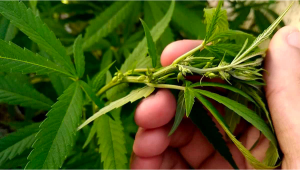



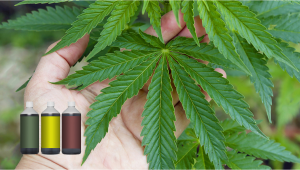

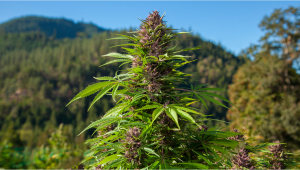

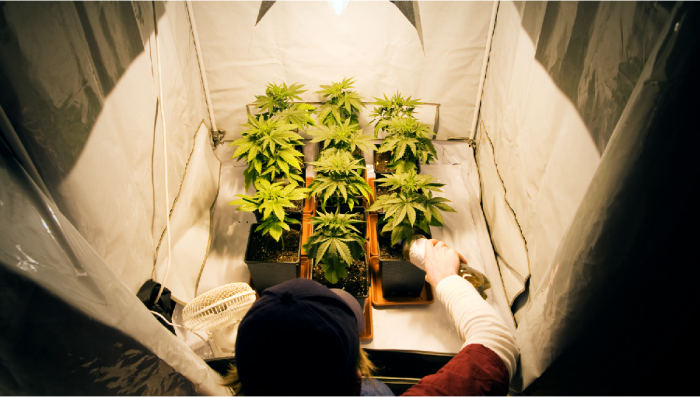
Comments